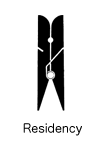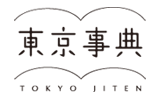Exhibition: Mercedes-Benz Art Scope 2018-2020
>>>> Japanese
Exhibition: Mercedes-Benz Art Scope 2018-2020
Participating Artists: Tsuyoshi Hisakado, Haris Epaminonda, Meiro Koizumi
July 23 (Thursday/national holiday) - September 6 (Sunday), 2020
Hara Museum of Contemporary Art (Tokyo)

The Hara Museum of Contemporary Art is delighted to present Mercedes-Benz Art Scope 2018-2020. Since 2003, the Hara Museum has partnered with Mercedes-Benz Japan in the Art Scope artist-in-residence program which invites young artists from Japan and Germany to live in and draw inspiration from a different cultural environment. Arts Initiative Tokyo [AIT] cooperate this program and artist-in-residence program.
In 2018, the Japanese artist Tsuyoshi Hisakado was sent to Berlin for the 2018-2020 program and from Germany, the Cypriot artist Haris Epaminonda was sent to Tokyo in 2019. These two, as well as a previous Art Scope participant, Meiro Koizumi (Berlin, 2010), come together in this exhibition to present their latest creations, produced under the challenging constraints, both social and physical, of the current health crisis facing humanity.
Highlights
Hisakado has been drawing increasing attention for installations that incorporate samples collected of everyday phenomena, memories retained by particular locations and historical events and transformed into fragments of sound, light, and sculpture. Last year, his collaborative work with Apichatpong Weerasethakul debuted at the 58th Venice Biennale. The same year saw the staging of his first theater work Practice of Spiral. In March 2020, Practice of Spiral, his first large-scale solo exhibition in Japan, opened at the Toyota Municipal Museum of Art. For this exhibition, Hisakado, in his usual fashion of engaging in a dialog with a given space to find inspiration, has created an installation in the museum's Gallery II that takes advantage of its unique configuration − a gentle arc that seems to enclose the outer garden. Within the gallery space Illuminated only by natural light, the artist uses glowing colors and sound to engage and rarify the senses.
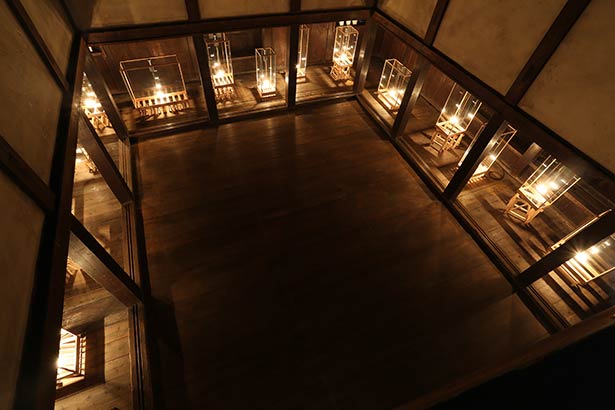
Tsuyoshi Hisakado, Gale, 2017 (reference image)
Haris Epaminonda uses the technique of collage in her film/video works and installations. She became a focus of international attention at the 58th Venice Biennale last year when she was given the Silver Lion for a Promising Young Participant. As a long admirer of Japanese culture that began with an interest in the Japanese film director Yasujiro Ozu, Epaminonda, on her maiden visit to Japan to take up her residency last summer, chose to reside in both Tokyo and Kyoto. In this exhibition, she has collaborated with the German artist Daniel Gustav Cramer in a work entitled Untitled #01 b/l which takes as its theme the music of Hiroshi Yoshimura, an artist closely associated with the Hara Museum in the past. She also presents a video work Japan Diaries that she made on Super 8 film during her stay in Japan and digitized for this exhibition.

Haris Epaminonda, VOL. XXVII, 2019 (reference image)
Photo © Andrea Avezzù Courtesy: La Biennale di Venezia 58th International Art Exhibition- La Biennale di Venezia, May You Live In Interesting Times
Meiro Koizumi is known for works that use theatrical techniques to highlight the relationship between humans and humans, between humans and society, and between words and the body. In recent years, he has also been creating artwork that uses VR (virtual reality) technology. At the Aichi Triennale last year, Koizumi made a big splash with the premier of Prometheus Bound, his first theater piece using VR technology. In this exhibition, he is presenting Anti-Dream #1 (Room with a Sculpture), a sound sculpture that requires visitors to listen to sounds while moving between two gallery spaces, and Anti-Dream #2 ( In a Temple) for which visitors download and listen to an audio file while in the city.

Meiro Koizumi, New Breath just After the Tempest, 2018 (reference image)
Participating Artists
Tsuyoshi Hisakado
Born in 1981 and lives in Kyoto, Hisakado received an M.F.A. in sculpture at Kyoto City University of Arts in 2007. His major exhibitions in recent years include Aichi Triennale 2016, Culture City of East Asia 2017 Kyoto: Asia Corridor Contemporary Art Exhibition, MAM Project 025 (Mori Art Museum, Tokyo, 2018) and the 58th Venice Biennale International Exhibition May You Live in Interesting Times. In 2016, he created the stage design for chelfitsch's Time's Journey Through a Room which was performed worldwide. In 2019, his debut theater work Practice of Spiral was staged at ROHM Theatre Kyoto as part of the Kyoto Experiment: Kyoto International Performing Arts Festival. Hisakado's first large-scale solo exhibition in Japan Practice of Spiral opened at the Toyota Municipal Museum of Art in March 2020.
Haris Epaminonda
Born in Nicosia, Cyprus in 1980 and lives in Berlin, Epaminonda studied at the Royal College of Art and Kingston University in England. In 2013, she was one of four artists shortlisted for Germany's preeminent art prize, the Preis der Nationalgalerie. She represented Cyprus at the 52nd Venice Biennale in 2007 Old earth, no more lies, I've seen you ... and the 58th Venice Biennale May You Live in Interesting Times where she won the Silver Lion for a Promising Young Participant. She has also contributed to many other international exhibitions such as the Berlin Biennale (2008) and dOCUMENTA 13 (2012) in Kassel, Germany. In Japan, she participated in the group exhibition The Kaleidoscopic Eye: Thyssen-Bornemisza Art Contemporary Collection at the Mori Art Museum in 2009.
Meiro Koizumi
Born in Gunma, Japan in 1976 and lives in Yokohama, Koizumi graduated from International Christian University and studied at Chelsea College of Art and Design (London). His past solo exhibitions include MAM Project 009 Koizumi Meiro at Mori Art Museum, Tokyo (2009), Projects 99: Meiro Koizumi at The Museum of Modern Art, New York (2013), Trapped Voice Would Dream of Silence, Arts Maebashi, Maebashi, Japan (2015) and Battlelands at Perez Art Museum Miami (2018). Group shows include Art Scope 2009-2011: Invisible Memories, Hara Museum of Contemporary Art (2011), Future Generation Art Prize 2012, Pinchuk Art Center, Kiev (2012), Demarcation, Ginza Maison Hermès Le Forum, Tokyo (2015), the 12th Shanghai Biennale (2018) and Sharjah Biennial 14, UAE (2019). His works are included in numerous collections all over the world. His VR-incorporated theater work Prometheus Bound was presented at Aichi Triennale 2019.
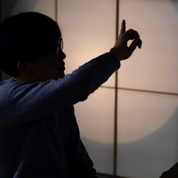
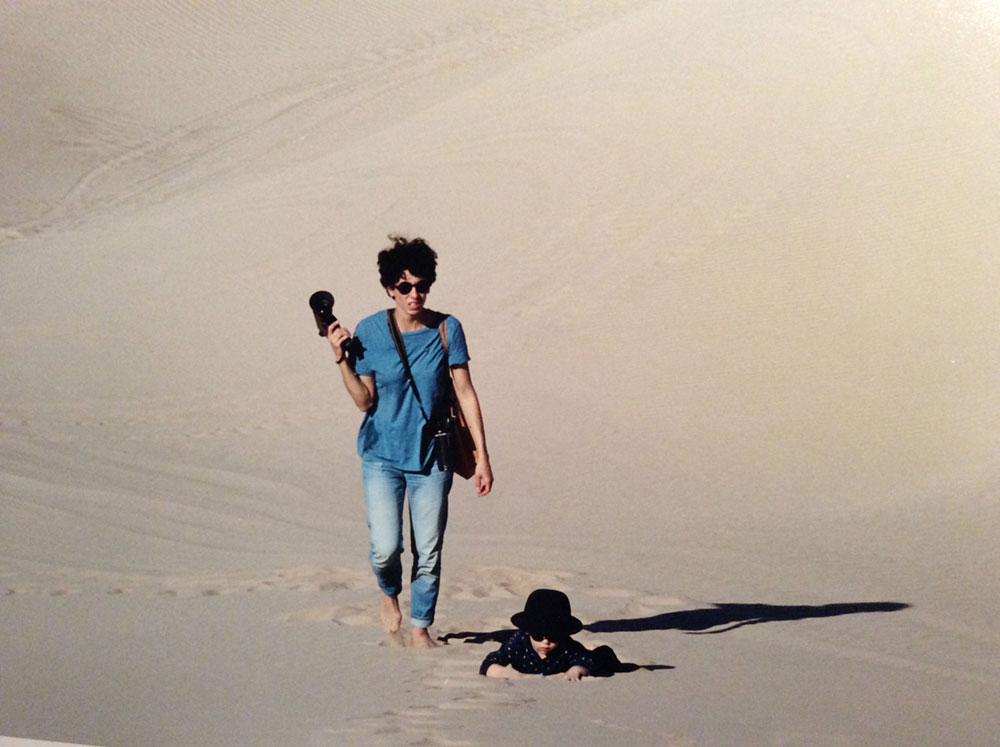
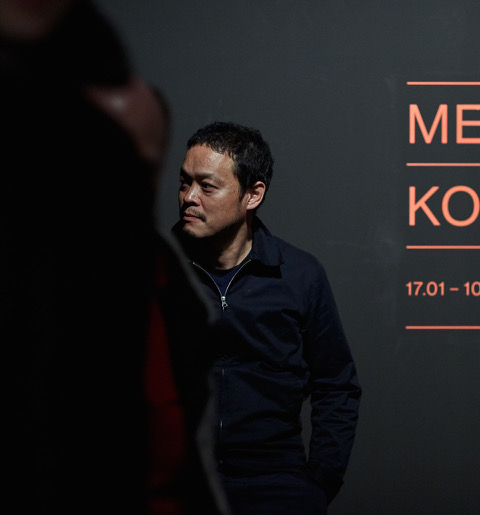
Left: Tsuyoshi Hisakado / Middle: Haris Epaminonda / Right: Meiro Koizumi
About Mercedes-Benz Art Scope
This program was launched in 1991 under the name Art Scope and the Hara Museum has been a partner since 2003. Starting with the present exhibition, the program has been renamed Mercedes-Benz Art Scope.
As its main points, the program seeks to promote the development of contemporary art and the exchange of culture between Japan and Europe by providing an artist-in-residence experience of approximately 3 months in Berlin for Japanese artists and in Tokyo for German artists, and organizing and holding a group exhibition featuring the participating artists at the Hara Museum to present the results of their experience.
In addition to the name change, it was decided that one past participant of the program would be invited as a guest artist. It was thought that by showcasing the recent work of past participants, a light would be shone on the trajectory of their post-residence careers, and therefore on the program's history and evolution of more than a quarter of a century.
In recent years, artist-in-residence programs have been flourishing throughout the world as a means of enabling individual artists to create work or conduct research for that purpose for a given period of time and to deepen cultural exchange at the place of residence. In Japan, municipalities, NPOs and other bodies have been actively engaged in such activities since the 1990s.
The following is a list of previous Art Scope exhibitions held at the Hara Museum.
2017 Mercedes-Benz Art Scope 2015-2017: Wandering to Wonder★
Participating artists: Taro Izumi, Menja Stevenson, Tokihiro Sato
2014 Art Scope 2012-2014 - Remains of Their Journeys
Participating artists: Ryosuke Imamura, Satoshi Ohno, Rita Hensen, Benedikt Partenheimer
2011 Art Scope 2009-2011: Invisible Memories
Participating artists: Meiro Koizumi, Hiroe Saeki, Eva Berendes, Jan Scharrelmann
2008 Art Scope 2007 / 2008 - Faces of Existence★
Participating artists: Izumi Kato, Yuken Teruya, Eva Teppe, Ascan Pinckernelle
2006 Art Scope 2005 / 2006 - Interface Complex★
Participating artists: Hiroharu Mori, Kohei Nawa, Katja Strunz, Georg Winter
2005 Art Scope 2004: Cityscape into Art - Michiko Shoji Johannes Wohnseifer
Participating artists: Michiko Shoji, Johannes Wohnseifer
Before the Hara Museum's partnership began, Art Scope was a program that sent only Japanese artists to Monflanquin in the south of France. The artists who participated during this period are as follows.
Satoko Masuda (1991), Ko Kashiwagi (1992), Tokihiro Sato (1993), Kenjiro Okazaki (1994), Keita Egami (1995), Seigen Kyu (1996), Asako Tokitsu (1997), Takanobu Kobayashi (1998), Yasuko Iba (1999), Tomoko Maekawa (2000), Sayaka Akiyama (2001), Nobuyuki Takahashi (2002)
To mark the start of the Hara Museum's partnership, the twelve artists were featured in 12 Years of Art Scope: Reflection on Artist in Residence which was held in 2003.
A star (★) is used to indicate exhibitions that were also held at Daimler Contemporary, the contemporary art gallery operated by Daimler AG in Berlin.
Exhibition Details
Title: Mercedes-Benz Art Scope 2018-2020
Dates (revised): July 23 (Thursday/national holiday) - September 6 (Sunday), 2020
Venue: Hara Museum of Contemporary Art (4-7-25 Kitashinagawa, Shinagawa-ku, Tokyo 140-0001)
www.haramuseum.or.jp
Organized by: Hara Museum of Contemporary Art and Mercedes-Benz Japan, Co., Ltd.
Under the auspices of: Embassy of the Federal Republic of Germany in Japan
Cooperation provided by: HOLBEIN ART MATERIALS INC.
Cooperation and residency program coordination provided by: Arts Initiative Tokyo [AIT]
Closed: Mondays (except August 10) and August 11
Admission: General 1,100 yen; Students 700 yen (high school and university) or 500 yen (elementary and junior high); Free for Hara Museum members and students through high school every Saturday during the school term
Directions: 5 minutes by taxi or 15 minutes on foot from JR Shinagawa Station (Takanawa exit); or from the same station take the 反No.96 bus, get off at the first stop (Gotenyama) and walk 3 minutes.
*A reservation is required in order to visit the museum. For details, please go to the museum website.www.haramuseum.or.jp
*Please note that the exhibition period and starting date are subject to change depending on the Covid-19 situation.
About Mercedes-Benz Art Scope
This program was launched in 1991 under the name Art Scope and the Hara Museum has been a partner since 2003. Starting with the present exhibition, the program has been renamed Mercedes-Benz Art Scope.
As its main points, the program seeks to promote the development of contemporary art and the exchange of culture between Japan and Europe by providing an artist-in-residence experience of approximately 3 months in Berlin for Japanese artists and in Tokyo for German artists, and organizing and holding a group exhibition featuring the participating artists at the Hara Museum to present the results of their experience.
In addition to the name change, it was decided that one past participant of the program would be invited as a guest artist. It was thought that by showcasing the recent work of past participants, a light would be shone on the trajectory of their post-residence careers, and therefore on the program's history and evolution of more than a quarter of a century.
In recent years, artist-in-residence programs have been flourishing throughout the world as a means of enabling individual artists to create work or conduct research for that purpose for a given period of time and to deepen cultural exchange at the place of residence. In Japan, municipalities, NPOs and other bodies have been actively engaged in such activities since the 1990s.
2020-6-26


